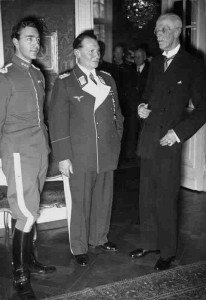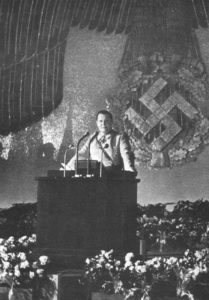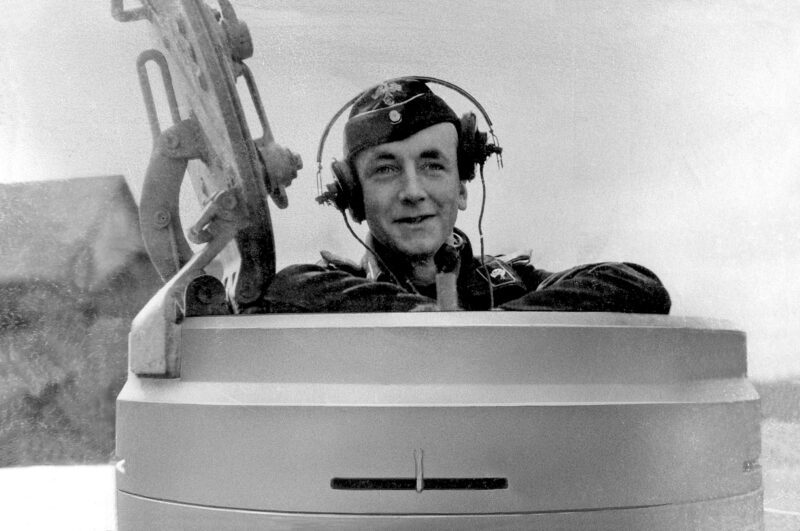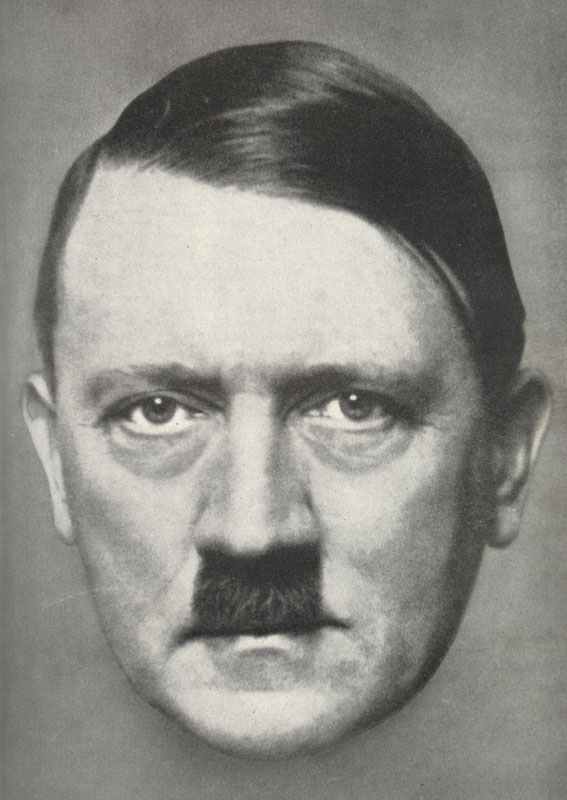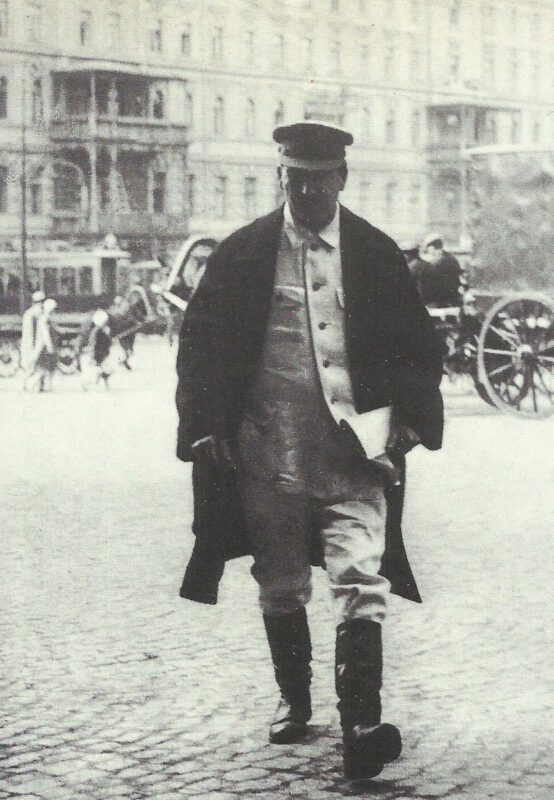Hermann Göring Biography: An Insight into the Reichsmarschall’s Life.
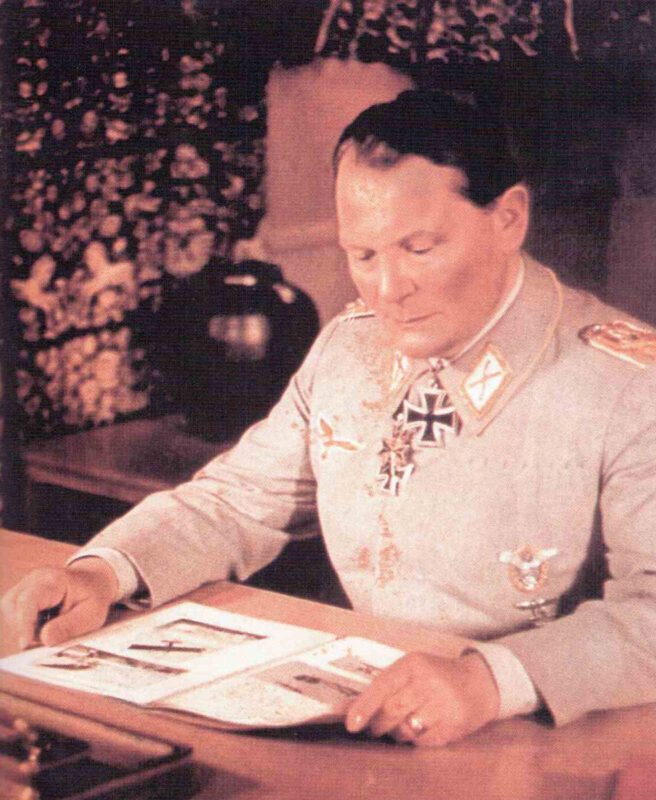
Hermann Göring Biography
Table of Contents
Hermann Göring was a central figure in the National Socialist German Workers’ Party (Nazi Party) and a prominent German politician during the first half of the 20th century.
Rising to power alongside Adolf Hitler, Göring held numerous positions of authority within the Nazi hierarchy, eventually becoming one of the most influential leaders of the Third Reich.
He was actually less interested in Nazi ideology than in power and exploited this to shamelessly enrich himself.
His political career was characterized by its rapid ascent and tragic fall, reflecting the tumultuous era of German history in which he lived.
Göring’s influence extended across the political, military, and economic spheres.
He founded the Gestapo, served as commander-in-chief of the Luftwaffe (German Air Force), and was appointed Hitler’s designated successor at one point.
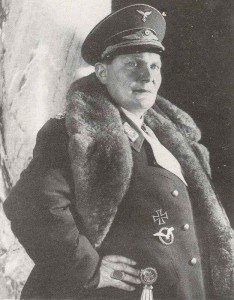
His role in the Nazi Party’s rise and maintenance of power was significant, as he played a key part in orchestrating the Reichstag Fire and the subsequent establishment of a totalitarian state.
His actions during World War II and his involvement in the Holocaust marked him as one of the era’s most notorious war criminals.
Despite his early accomplishments as a fighter pilot in World War I, where he was awarded the Pour le Mérite, Göring’s legacy is overwhelmingly overshadowed by his later crimes against humanity.
Following Germany’s defeat in World War II, he was convicted during the Nuremberg Trials and sentenced to death.
However, he managed to evade execution by committing suicide, leaving a complex and dark legacy that continues to be the subject of historical examination and debate.
Early Life and Military Career
Hermann Göring was born on January 12, 1893, in Rosenheim, Bavaria.
He grew up in a privileged family, his father was a prominent judge and his mother came from a wealthy family. Göring enjoyed a comfortable upbringing and received the best education.
His military career began with service in World War I, where he distinguished himself as a fighter pilot, and continued through the interwar period, during which his political involvement deepened.
World War I Service
Göring joined the Prussian army in 1912 and quickly developed an interest in aviation.
Until October 1914, however, he was an infantry officer and fought on the Western Front. He then switched to the air service and began as an observer. In 1915, he trained as a pilot.
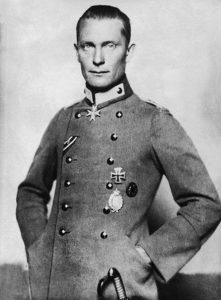
His skills in the air rapidly grew, earning him a position as a fighter pilot.
He quickly rose through the ranks and became a highly decorated fighter pilot. Göring’s bravery and skills earned him the respect and admiration of his fellow pilots.
However, Göring’s success in the military was not without its challenges. He had a reputation for being hot-headed and impulsive, often making hasty decisions in the heat of battle. This sometimes led to unnecessary risks and sacrifices. Nevertheless, his undeniable talent and charisma made him a natural leader, and he was even appointed head of the ‘Flying Circus’ after Richthofen’s death.
As the war progressed, Göring’s leadership qualities became increasingly evident. Not only was he a skillful pilot, but he also possessed a keen strategic mind. He was known for his ability to analyze situations quickly and make lightning-fast decisions. This earned him the trust of his superiors, who often relied on his expertise when planning and executing missions.
- 1915: Initial combat missions.
- 1916: Meets Manfred von Richthofen (the “Red Baron”).
- 1917: Takes command of Jagdstaffel 26.
- 1918: Succeeds von Richthofen as leader of the ‘Flying Circus’, officially known as Jagdgeschwader 1.
During his service, Göring was recognized for his combat prowess and was awarded numerous decorations, including the prestigious Pour le Mérite, and achieved 22 recognized aerial victories as a fighter pilot.
Interwar Period
Post-war, Göring spent time in both Austria and Sweden, at points working odd jobs and developing business ventures.
He continued to foster his aviation connections and maintained a keen interest in military and political developments.
- 1921: Marries Carin von Kantzow, a Swedish noblewoman.
- 1922: Returns to Germany.
- 1923: Joins the National Socialist German Workers’ Party (NSDAP).
- 1924: Takes a seat in the Reichstag for the NSDAP.
Göring’s involvement with the Nazi Party and his subsequent rise to prominence were significantly influenced by his military reputation and the relationships he built during his service.
Rise to Power
Hermann Göring’s ascension within the Nazi party was a key factor in the establishment of the totalitarian regime in Germany.
From his political debut to the establishment of the feared Gestapo, Göring’s journey to power was marked by critical events and alliances, particularly with Adolf Hitler.
Entry into Politics
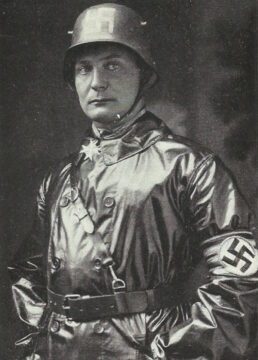
After Herman Göring’s distinguished service in World War I as a fighter pilot, he entered politics and joined the Nazi Party (NSDAP) in 1922.
He quickly became a close associate of Adolf Hitler, appreciating the party’s nationalist ideologies and anti-communist stance.
His charisma and war hero status effectively boosted his position within the party ranks.
Göring’s organizational talent and charisma subsequently helped him to gain more influence within the party. He was appointed head of the SA (Sturmabteilung), the NSDAP’s paramilitary organization. Göring’s leadership qualities became clear when he successfully expanded the SA and increased its membership.
Beer Hall Putsch
On November 8, 1923, Göring was a prominent figure in the Beer Hall Putsch, an attempted coup d’état.
The Nazi Party, led by Hitler, sought to overthrow the Bavarian government and ultimately the national Reichstag.
Although the putsch failed and Göring was heavily injured, his loyalty to Hitler and the cause strengthened their relationship, laying foundation for his future roles in the party.
He was able to return to Germany in 1927 thanks to an amnesty. In May 1928, he became a member of the Reichstag.
Formation of the Gestapo
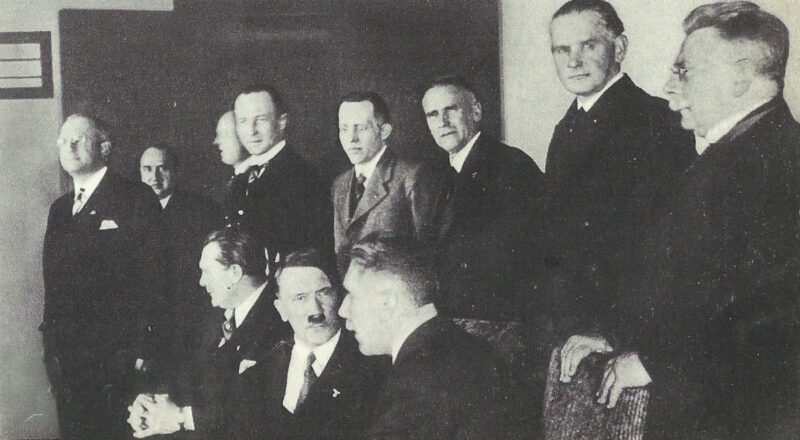
After the National Socialists seized power and Hitler was appointed Reich Chancellor in 1933, Göring was appointed Minister of the Interior of Prussia. This position gave him considerable power and enabled him to consolidate his authority.
As Minister of the Interior, Göring implemented various political measures that further consolidated the power of the NSDAP. He oversaw the creation of the Gestapo, the secret police, which was responsible for the surveillance and suppression of dissidents. Under Göring’s leadership, the Gestapo carried out extensive surveillance, arrests and interrogations to spread fear and ensure the Nazi regime remained in power.
It was initially set up in Prussia and developed into a notorious instrument of oppression and control that was essential for the Nazis’ consolidation of power.
Göring used his position to suppress political opposition and consolidate the Nazi regime’s control over the state.
With his increasing influence and control, Göring was appointed Reich Minister of Aviation in 1933. In this position, he was able to carry out the secret development of the German air force. Göring played a crucial role in transforming German aviation into a formidable military force by equipping it with modern aircraft and modernizing its tactics.
During his rise to power, Göring remained a loyal confidant of Hitler. He was known for his extravagant lifestyle, indulging in luxury and flaunting his opulence. Göring’s position and wealth cemented his status within the NSDAP and made him one of the most influential figures in Hitler’s inner circle.
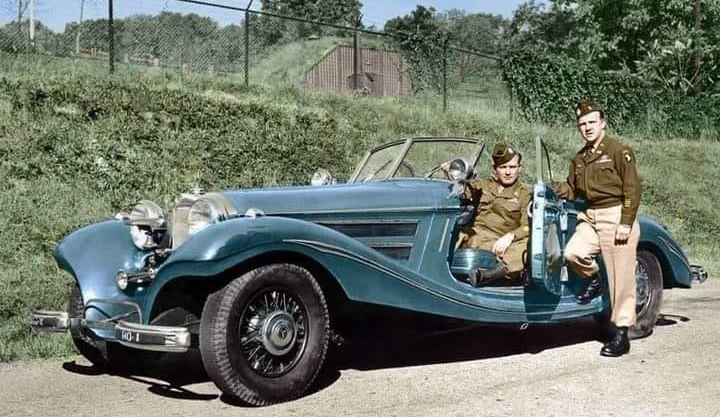
World War II and the Luftwaffe
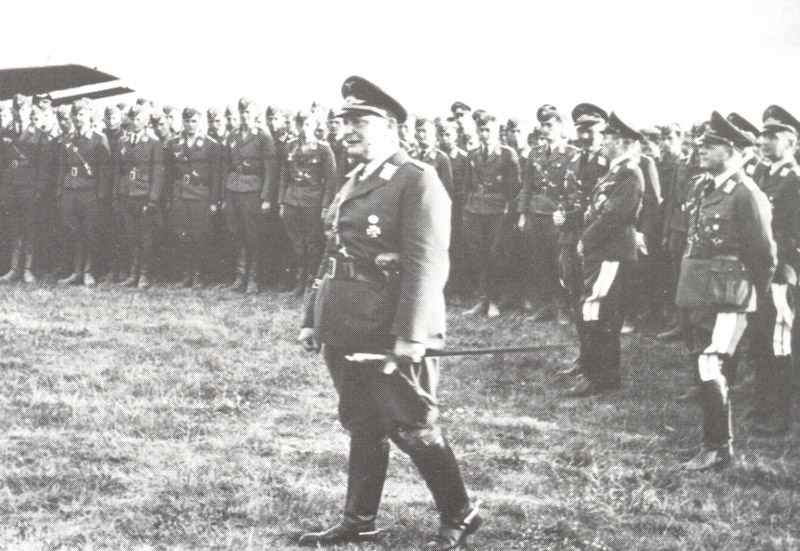
Hermann Göring played a significant role in expanding the Luftwaffe, which became a formidable air force by the start of World War II, and led it through key battles such as the Battle of Britain.
Expanding Air Force Power
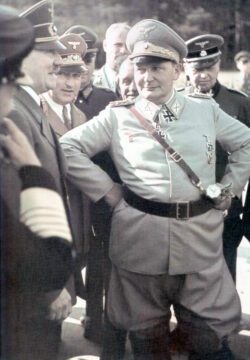
Under Göring’s command, the Luftwaffe experienced rapid expansion and modernization in the years leading up to World War II.
He was one of the primary architects behind transforming the German air force into a powerful military tool, despite restrictions imposed by the Treaty of Versailles.
After the German air force was made public in 1935, Göring officially assumed the post of Commander-in-Chief of the Luftwaffe. He was promoted to field marshal in 1938 and finally to Reichsmarschall in 1940.
By the onset of World War II, the Luftwaffe had become a significant part of Germany’s military might, with a focus on tactical bombing and supporting ground troops.
- Number of Aircraft in 1939: Over 4,000
- Key Aircraft Types: Messerschmitt Bf 109, Junkers Ju 87 (Stuka)
- Roles: Air superiority, close air support, tactical bombing
- Opponents: Allied air forces
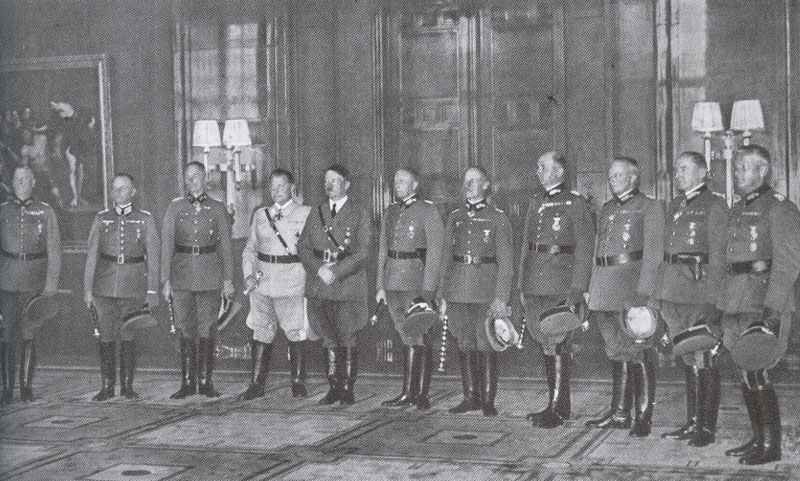
Battle of Britain
During the Battle of Britain in 1940, Göring’s confidence in the Luftwaffe was put to the test.
The German air force aimed to gain air superiority over the Royal Air Force (RAF) as a precursor to a possible invasion of Britain, codenamed Operation Sea Lion.
The Luftwaffe’s initial strategy focused on destroying RAF infrastructure and aircraft, but it later shifted to bombing British cities.
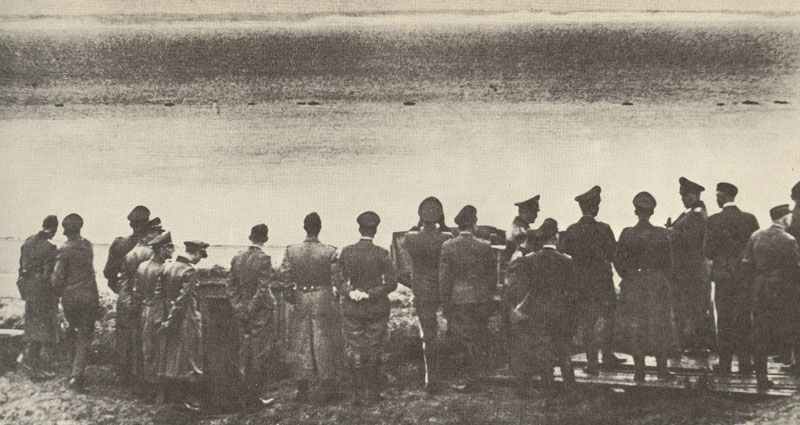
- Phase 1: Attacks on Shipping and RAF Airfields (July-August 1940)
- Phase 2: The Blitz – Bombing of British Cities (September 1940-May 1941)
- Outcome: The Luftwaffe failed to secure air superiority.
Despite their numerical superiority and initial successes, the Luftwaffe could not maintain sustained operations against the well-organized defense of the RAF.
This failure marked a turning point in World War II and highlighted shortcomings in Göring’s leadership. It also underscored the critical importance of air power in modern warfare.
Göring’s extravagant lifestyle and his corruption further undermined his reputation within the NSDAP. In the meantime, he had amassed numerous offices, not all of which he was able to fulfill properly. In addition, he was increasingly absent from duty, so that he was only able to devote little time to organizing the Luftwaffe. And when he did, his interventions tended to be detrimental.
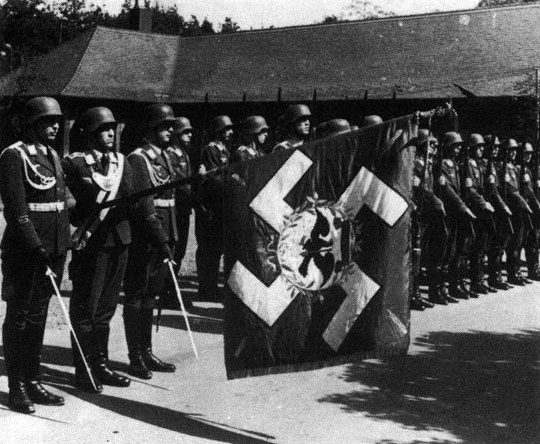
In the final days of the war, Göring tried to wrest power from Hitler, but his actions were seen as treason. Hitler stripped him of his titles on April 23, 1945 and expelled him from the party.
The Holocaust and War Crimes
As a leading figure of the Nazi Party, Hermann Göring played a significant role in the Holocaust and was held accountable for various war crimes following the defeat of Nazi Germany.
Role in Jewish Persecution
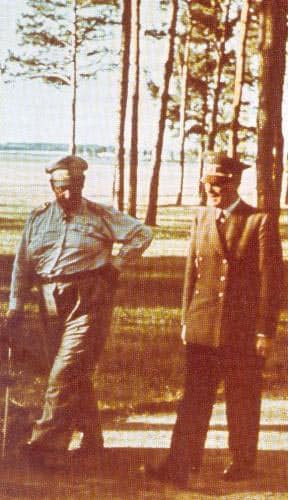
Hermann Göring was instrumental in the persecution of Jewish people during the Holocaust.
As Hitler’s deputy, Göring played an important role in the implementation of the Final Solution, a plan to exterminate the Jewish population. He oversaw the confiscation of Jewish property and the forced emigration of Jews from Germany.
Göring’s involvement in the Holocaust was not limited to administrative tasks. He took an active part in the decision-making process and played a crucial role in coordinating the genocide. Göring attended meetings in which the extermination of the Jews was discussed and he was responsible for ensuring that the necessary resources were made available to carry out these atrocities.
In addition, Göring’s personal ambition and greed contributed to his involvement in further war crimes. He had valuable works of art and other cultural treasures confiscated from the occupied territories and built up an extensive personal collection. Göring’s actions showed a complete disregard for the lives and cultural heritage of those persecuted by the Nazi regime.
In 1941, he issued an authorization to SS-Obergruppenführer Reinhard Heydrich to prepare and carry out the so-called Final Solution of the Jewish Question, which led to the mass murder of Jews across Europe.
He managed the displacement of Jewish citizens and their assets, leading to their deportation to concentration camps.
Reichsmarschall Göring’s actions directly contributed to the deaths of millions and the suffering of countless others during the implementation of the Holocaust.
Nuremberg Trials
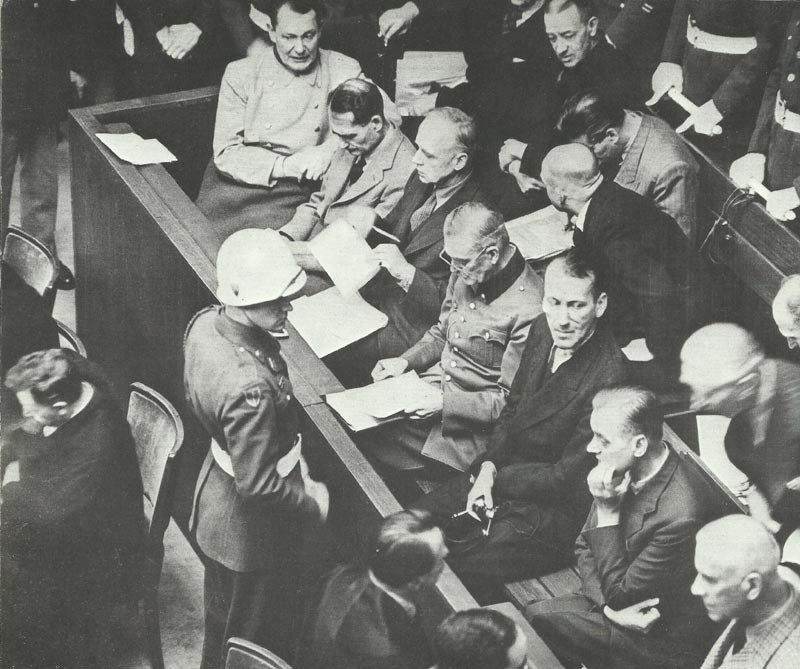
Following the end of World War II, Hermann Göring was arrested in May 1945 by US troops and prosecuted at the Nuremberg Trials by the International Military Tribunal for his role in crimes against peace, war crimes, and crimes against humanity.
Prosecutors highlighted his central involvement in both the execution of the war and the atrocities committed under the Nazi regime.
Göring, along with other high-ranking officials, faced evidence of their involvement in the systematic genocide of Jews and the cruel treatment of POWs and civilians. He was found guilty on all counts but took his own life before he could be executed.
Personal Life and Decline
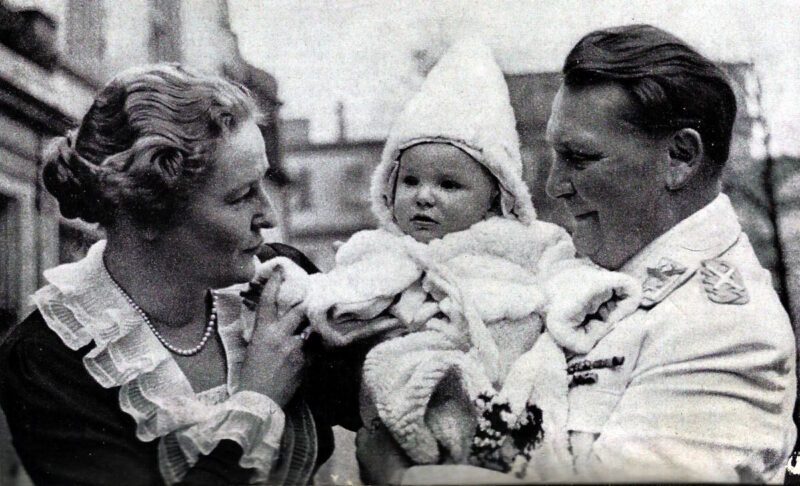
The personal life of Hermann Wilhelm Göring was marked by lavish excess, morphine addiction, and a decline that culminated in his death.
His two marriages to Emmy Sonnemann and previously to Baroness Carin von Kantzow played significant roles in his life outside his political and military endeavors.
Drug Addiction
Göring struggled with morphine addiction, which began after he was prescribed the drug due to pain from a wound he sustained in the 1918 Beer Hall Putsch.
His dependency on morphine persisted for many years, affecting his health and behavior. The addiction was a constant battle and influenced his personal and political decisions.
Art theft
One aspect of Göring’s legacy that has been extensively studied is his fascination with art and his involvement in the looting of valuable works of art during the war.
As head of the Luftwaffe, Göring had access to important cultural sites and collections throughout Europe. He used this position to amass a significant personal art collection, which included masterpieces by famous artists such as Rembrandt, Vermeer and Raphael.
This went so far that even the SS under Himmler were at times investigating art theft when soldiers from Hermann Göring’s Parachute Panzer Division evacuated the art treasures from the threatened Monte Cassino monastery on their own initiative without Göring’s knowledge.
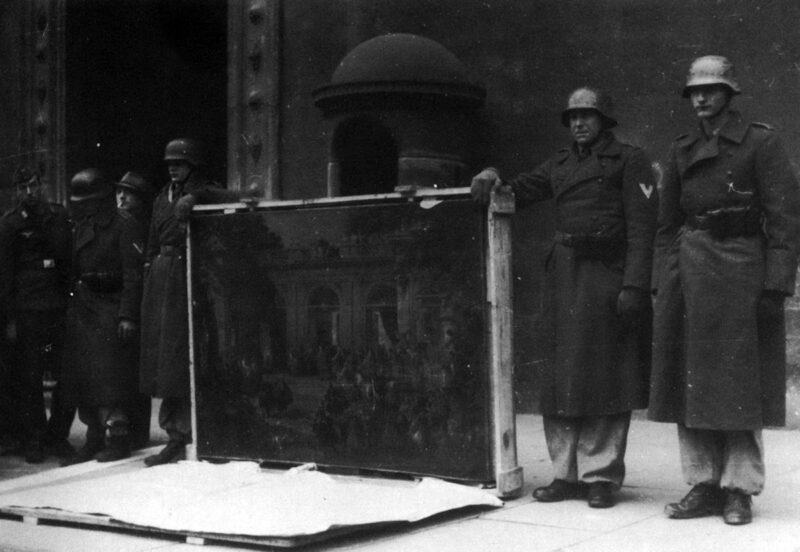
Final Years and Death
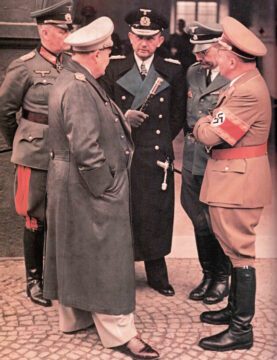
In the final years of his life, Hermann Göring’s influence waned as Germany faced defeat in World War II.
He was captured by the Allies and convicted during the Nuremberg Trials.
Prior to his scheduled death by hanging, Göring committed suicide using a cyanide capsule hidden in a jar of skin medication.
He died on October 15, 1946, just hours before his execution was to take place.
His wife, Emmy Sonnemann, survived him, and they had one daughter.
Frequently Asked Questions
This section addresses some of the most common inquiries concerning Hermann Göring, providing concise answers based on historical records.
How did Hermann Göring die?
Hermann Göring died by suicide on October 15, 1946, by ingesting potassium cyanide. He was scheduled to be executed following his sentencing at the Nuremberg trials.
Can you tell me about Hermann Göring’s family background?
Hermann Göring was born into a well-off Bavarian family on January 12, 1893.
His father, Heinrich Ernst Göring, was a former cavalry officer who became the first Governor-General of the German protectorate of South West Africa, now Namibia.
What was the name of Hermann Göring’s wife or wives?
Hermann Göring was married twice.
His first wife was Carin Göring (née Fock), whom he married in 1923. After her death in 1931, he married his second wife, Emmy Göring (née Sonnemann), a German actress, in 1935.
Where was Hermann Göring laid to rest after his death?
After his death, Hermann Göring’s body was cremated, and his ashes were scattered in an unknown location to prevent any site from becoming a potential memorial.
What are some key highlights from Hermann Göring’s early life?
In his early life, Hermann Göring was a World War I fighter pilot and a recipient of the Pour le Mérite, Prussia’s highest military order at the time.
He also became the last commander of the famous Jagdgeschwader 1, the fighter wing once led by the “Red Baron” Manfred von Richthofen.
What can be said about Hermann Göring’s command in the Luftwaffe?
Hermann Göring was the Commander-in-Chief of the Luftwaffe, the German Air Force, from 1935 to 1945.
Under his leadership, the Luftwaffe was initially formidable but eventually suffered from strategic missteps and was overwhelmed by the Allies during World War II.
References and literature
Göring: Eine Karriere (Guido Knopp)
Luftwaffe Handbook (Dr Alfred Price)
Chronology of World War II (Christopher Argyle)





